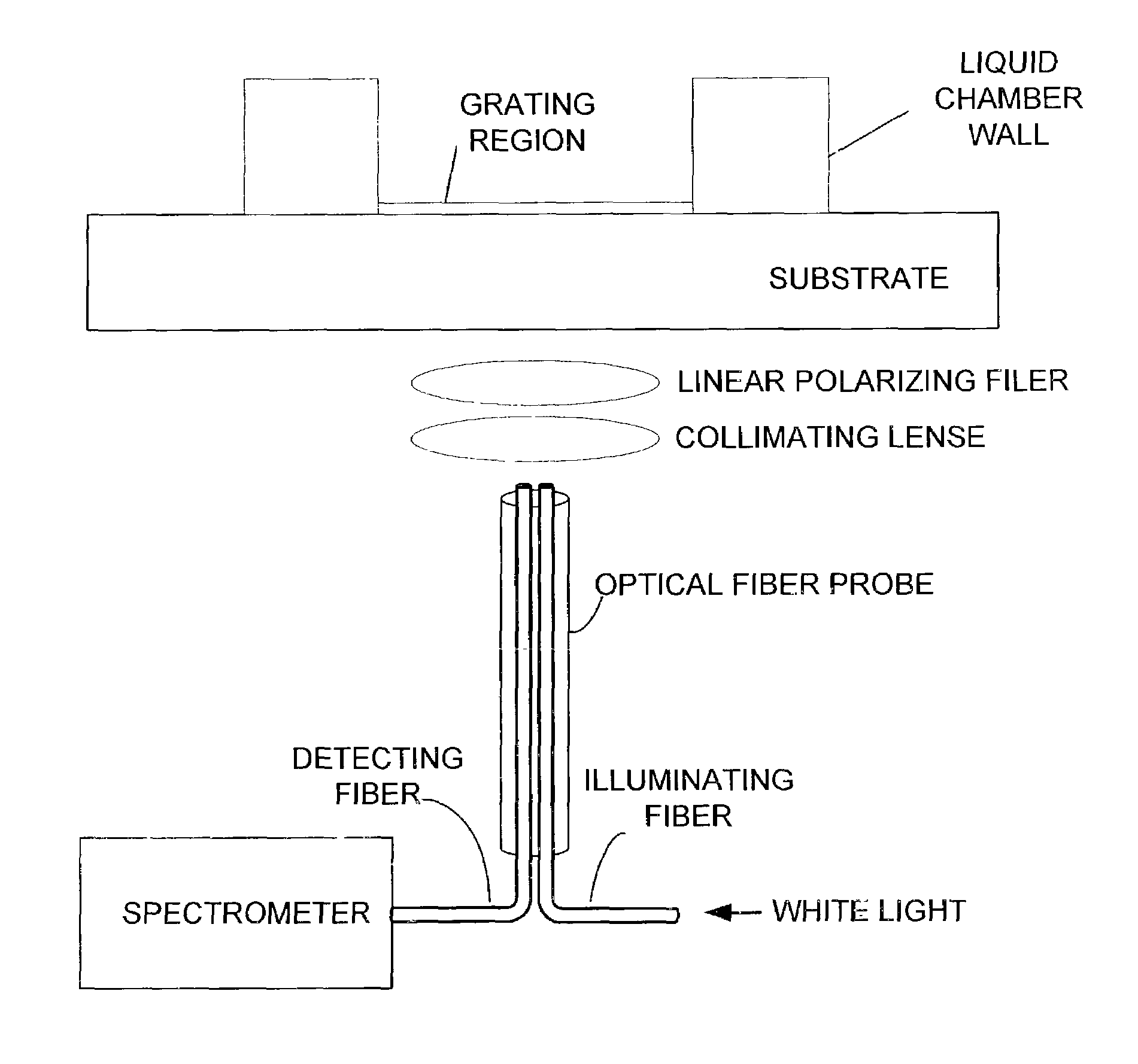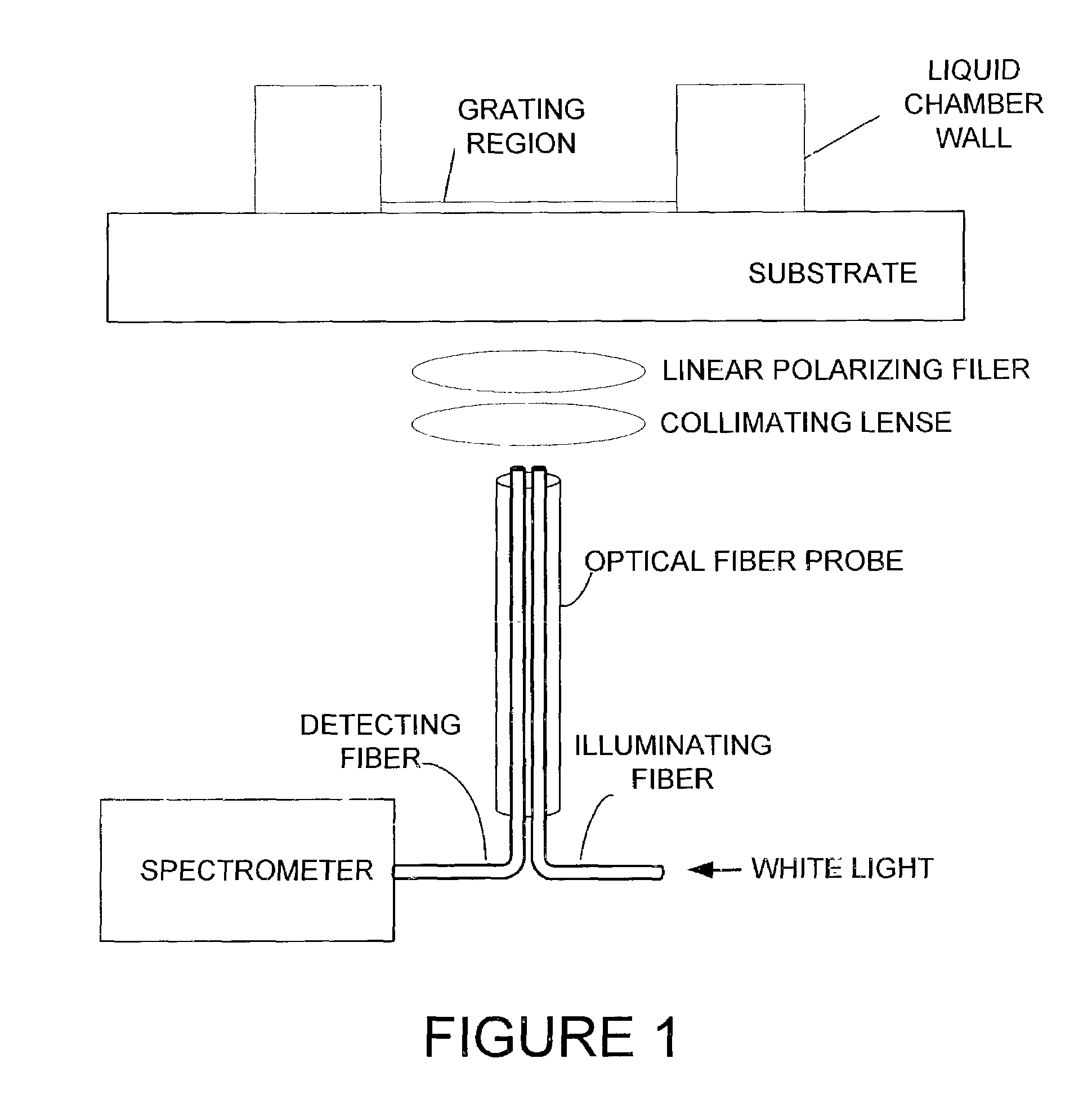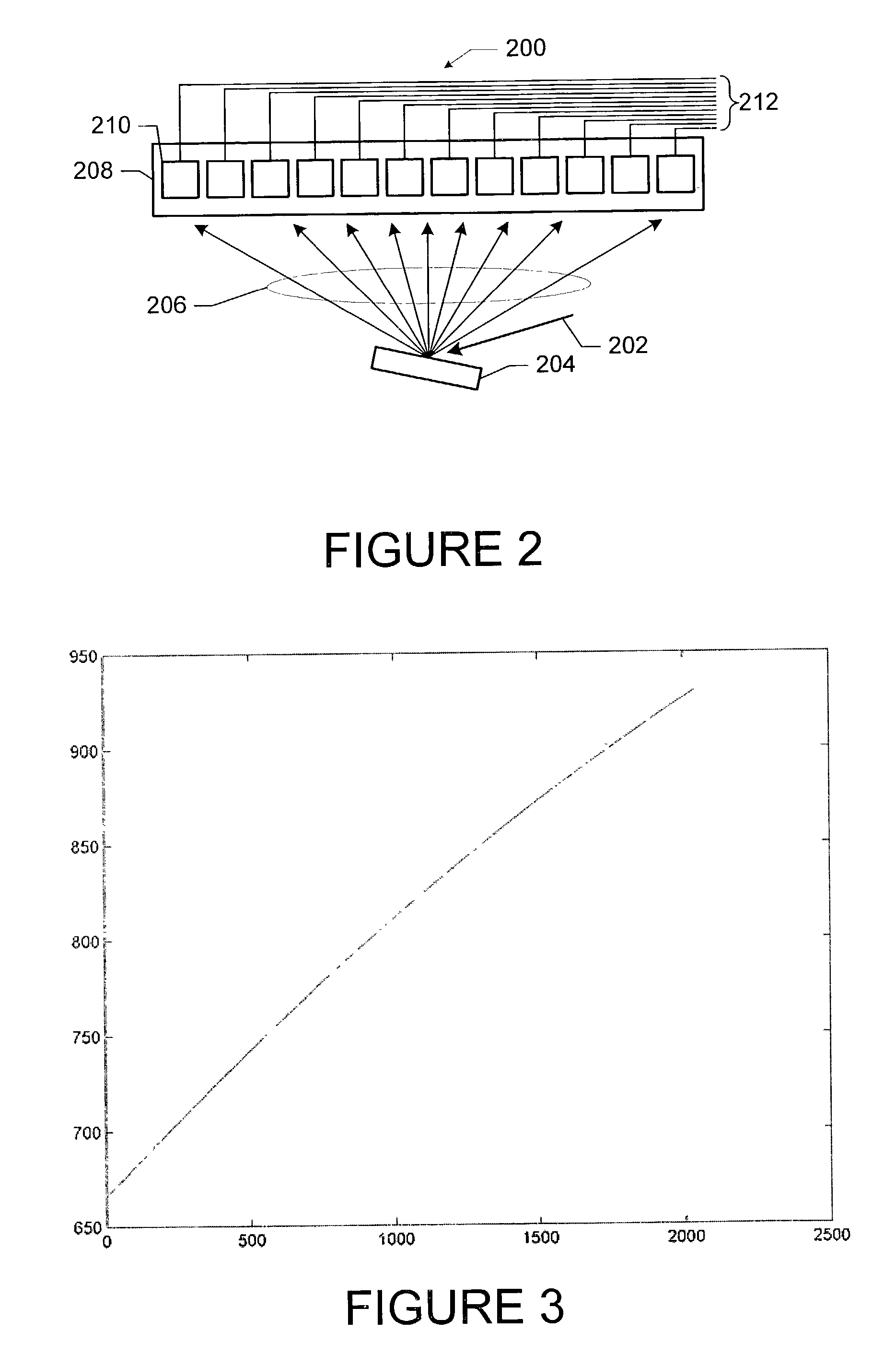Method and apparatus for biosensor spectral shift detection
a biosensor and spectral shift technology, applied in the field of biosensors, can solve the problems of limited commercial acceptance of label-free biosensor technologies, high cost of production and packaging of biosensors fabricated on semiconductor or glass wafers in batch photolithography/etching/deposition process, arrays pose difficult challenges in terms of package cost and compatibility with sensor exposure to fluids
- Summary
- Abstract
- Description
- Claims
- Application Information
AI Technical Summary
Benefits of technology
Problems solved by technology
Method used
Image
Examples
Embodiment Construction
[0027]The preferred calorimetric resonant optical biosensor allows biochemical interactions to be measured on the sensor's surface without the use of fluorescent tags or calorimetric labels. The sensor surface preferably contains an optical structure that, when illuminated with collimated white light, is designed to reflect only a narrow band of wavelengths. The narrow wavelength band is described as a wavelength “peak.”
[0028]One preferred guided mode resonant filter structure is a one-dimensional linear grating surface structure. The sensor can be manufactured by performing sub-micron definition of grating features using photolithography on the sensor. Alternatively, the sensor can be produced inexpensively over large surface areas using sub-micron microreplication of a master sensor surface structure on continuous sheets of plastic film. Alternative structures, including 2-D or 3-D structures, surface relief structures, glass substrates, discrete plastic film, as well as alternati...
PUM
| Property | Measurement | Unit |
|---|---|---|
| thickness | aaaaa | aaaaa |
| diameter | aaaaa | aaaaa |
| diameter | aaaaa | aaaaa |
Abstract
Description
Claims
Application Information
 Login to View More
Login to View More - R&D
- Intellectual Property
- Life Sciences
- Materials
- Tech Scout
- Unparalleled Data Quality
- Higher Quality Content
- 60% Fewer Hallucinations
Browse by: Latest US Patents, China's latest patents, Technical Efficacy Thesaurus, Application Domain, Technology Topic, Popular Technical Reports.
© 2025 PatSnap. All rights reserved.Legal|Privacy policy|Modern Slavery Act Transparency Statement|Sitemap|About US| Contact US: help@patsnap.com



